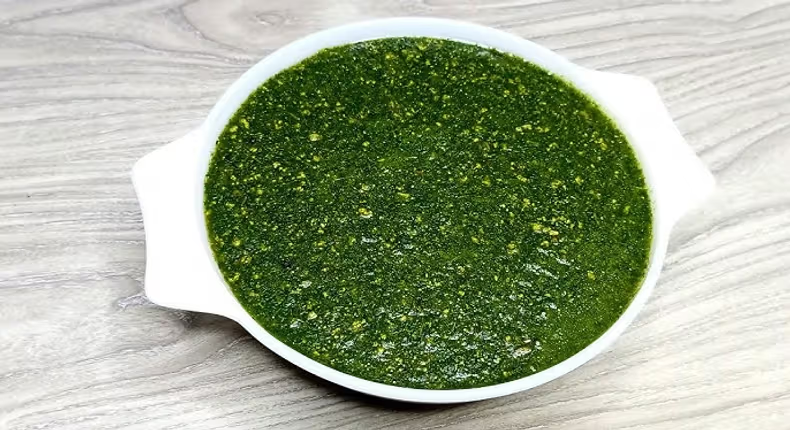Ewedu Soup, made from jute leaves, is a cherished dish in Nigeria, especially among the Yoruba people. Despite its seemingly simple nature, perfecting its preparation can elevate your culinary skills significantly. Ewedu soup has a distinctively slimy texture and is traditionally served with Nigerian swallows such as Amala, Eba, or Pounded Yam.
If you’re eager to learn how to make ewedu soup like a pro, follow these steps for an authentic and delicious experience:
Step 1: Gather Your Ingredients
For a rich, traditional taste, you’ll need:
- Fresh or frozen jute leaves (ewedu)
- Locust beans (iru)
- Ground crayfish
- Seasoning
- Salt – to taste
These basic ingredients are essential for achieving the authentic flavor of ewedu soup.
Step 2: Clean and Prepare the Leaves
If using fresh ewedu leaves, pluck them from the stem and wash them thoroughly to remove any sand or dirt. Proper cleaning is crucial for the best flavor. Rinse the leaves under running water, then drain and set aside.
For frozen ewedu leaves, thaw them at room temperature or in lukewarm water if you’re short on time. Once defrosted, they’re ready to use.
Step 3: Cook the Leaves
Add the cleaned jute leaves to a pot of boiling water. Cook them for about 5–10 minutes until they are soft and tender. Monitor the leaves closely to avoid overcooking, which could alter the soup’s consistency.
Step 4: Blend or Mash the Leaves
Traditionally, ewedu soup is blended using a small bunch of broomsticks called ijabe to achieve a smooth, slimy texture. However, using a blender is a more convenient option. Transfer the boiled leaves into a blender and blend until you achieve a smooth, slimy consistency. If you prefer a chunkier texture, blend the leaves less thoroughly.
Step 5: Add Seasonings and Simmer
Pour the blended ewedu back into the pot. Incorporate ground crayfish, a bouillon cube, and salt to taste. Simmer the soup on low heat for 3–5 minutes, stirring occasionally to prevent burning. This is when the soup thickens and becomes silky smooth. Add locust beans for an authentic Yoruba flavor if desired.
Step 6: Serve and Enjoy!
Ewedu soup pairs excellently with stews like chicken or beef stew and complements swallows such as Amala or Pounded Yam. For a traditional Abula dish, you can also serve it with Gbegiri (bean soup).
Tips for Perfecting Your Ewedu Soup
- Don’t Overcook: Jute leaves cook quickly. Overcooking will break down the leaves too much, affecting the soup’s mucilaginous quality.
- Rinse Thoroughly: Properly clean the leaves to avoid any gritty texture in the final dish.
- Frozen Leaves Work Too: If fresh leaves are unavailable, frozen ewedu is a good alternative. Ensure they are thawed properly before use.
Making ewedu soup involves attention to detail to achieve the ideal consistency and flavor. By following these steps, you’ll be able to prepare ewedu soup like a pro, impressing family and friends with this hearty and nutritious dish.

